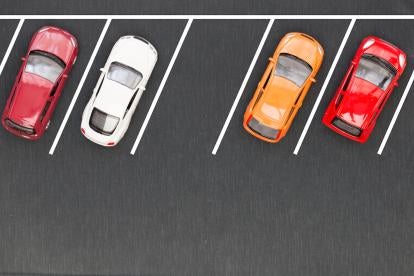This update helps automotive suppliers inform their legal and operational decisions to help address challenges and opportunities.
Key Developments
Foley & Lardner’s second annual Manufacturing White Paper, Top Legal Issues Facing the Manufacturing Sector in 2023, includes an article by Vanessa L. Miller and Nicholas J. Ellis which discusses new challenges and opportunities impacting supply chains as a result of electrified and connected vehicles.
U.S. new light-vehicle sales reached 1.38 million units in June, representing an increase of 20% year-over-year and a SAAR of 15.8 million units, according to estimates from GlobalData (formerly LMC Automotive). The analysis also indicates new light-vehicle inventory levels reached approximately 1.9 million units industrywide at the end of June.
Foley & Lardner provided an overview of IP considerations pertaining to patent and copyright protection for autonomous vehicle software.
New analysis from the National Renewable Energy Laboratory (NREL) estimates that a cumulative national capital investment of $53 billion to $127 billion in charging infrastructure is required by 2030 to support anticipated EV adoption.
Over 300,000 battery electric (BEV) and plug-in hybrid electric (PHEV) vehicles were sold in the U.S. in the first quarter of 2023, representing a market share of 8.6% and an increase of 56% from the same period in 2022, according to a report released on June 26 by Alliance for Automotive Innovation.
Cox Automotive estimates the average EV supply at U.S. dealerships rose to 92 days in the second quarter, up from 36 days a year earlier.
Safety conditions at electric vehicle battery plants are an area of growing interest for the UAW, according to a report in Bloomberg.
OEMs/Suppliers
GM, Ford, Hyundai, and Honda increased U.S. new-vehicle sales by double digit percentages in the first six months of 2023, and sales for Stellantis and Toyota were down by 1% when compared to the same period in 2022.
Electric Vehicles and Low Emissions Technology
Tesla delivered 466,140 BEVs worldwide in the second quarter of 2023, reflecting an increase of over 80% from the same period one year ago.
China’s BYD delivered 700,244 BEVs and PHEVs globally in the second quarter.
By 2025, Volkswagen subsidiary Electrify America will equip its fast charging networks in the U.S. and Canada with the North American Charging Standard (NACS) port favored by Tesla.
The U.S. Department of Energy announced a notice of intent to invest $2 billion from the Inflation Reduction Act to fund cost-shared grants for the domestic production of hybrid, plug-in electric hybrid, fully-electric and fuel cell electric vehicles.
GM announced its newly formed Technology Acceleration and Commercialization (TAC) group acquired Israel-based battery software startup ALGOLiON Ltd. for an undisclosed amount. The deal is expected to help “accelerate time-to-market of a cost-effective early hazard detection system.”
The Detroit News reports construction resumed on the module manufacturing building of the upcoming Stellantis and LG Energy Solution joint venture plant in Windsor, Ontario, following an agreement with the Canadian government for unspecified incentives.
Stellantis will invest 5 million euros to acquire a nearly 20% stake in Kuniko Ltd. as part of an agreement which provides the automaker with nickel sulphate and cobalt sulphate produced from the company’s Norway exploration project.
Automated, Autonomous or Connected Vehicles Technologies
Volkswagen will begin autonomous ride-hailing tests in Austin, Texas this month using ID Buzz electric vans equipped with technology from Mobileye.
Market Trends and Regulatory
Reuters reports the UAW asked the Biden administration to revise proposed emissions standards for model years 2027 and later light-duty and medium-duty vehicles to "better reflect the feasibility of compliance so that the projected adoption of (zero emission vehicles) is set to feasible levels, increases stringency more gradually, and occurs over a greater period of time."
U.S. Reps. Tim Walberg (R-MI) and Andrew Clyde (R-GA) recently introduced the Choice in Automobile Retail Sales (CARS) Act, which is intended to prohibit the Environmental Protection Agency from implementing its proposed emission standards for model years 2027 and later light-duty and medium-duty vehicles.
The California Air Resources Board (CARB) reached an agreement with leading truck and engine manufacturers that includes “flexibility for manufacturers to meet emissions requirements while still reaching the state’s climate and emission reduction goals.” As part of the Clean Truck Partnership, CARB will align with 2027 federal regulations for nitrogen oxide emissions, and manufacturers of medium- and heavy-duty vehicles committed to “meeting CARB’s zero-emission and criteria pollutant regulations in the state regardless of any attempts by other entities to challenge California’s authority.”






 />i
/>i

